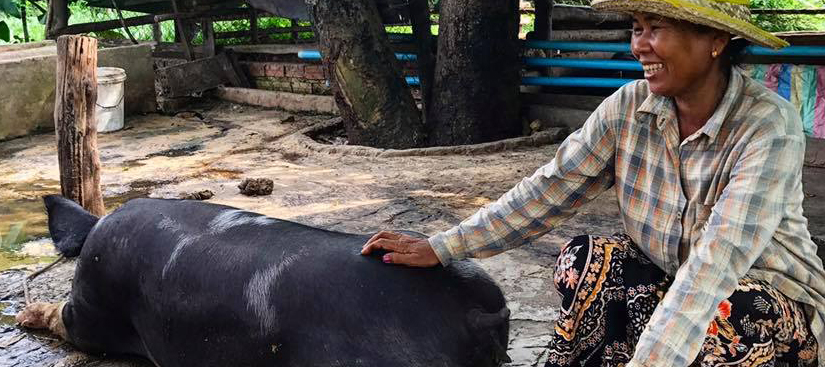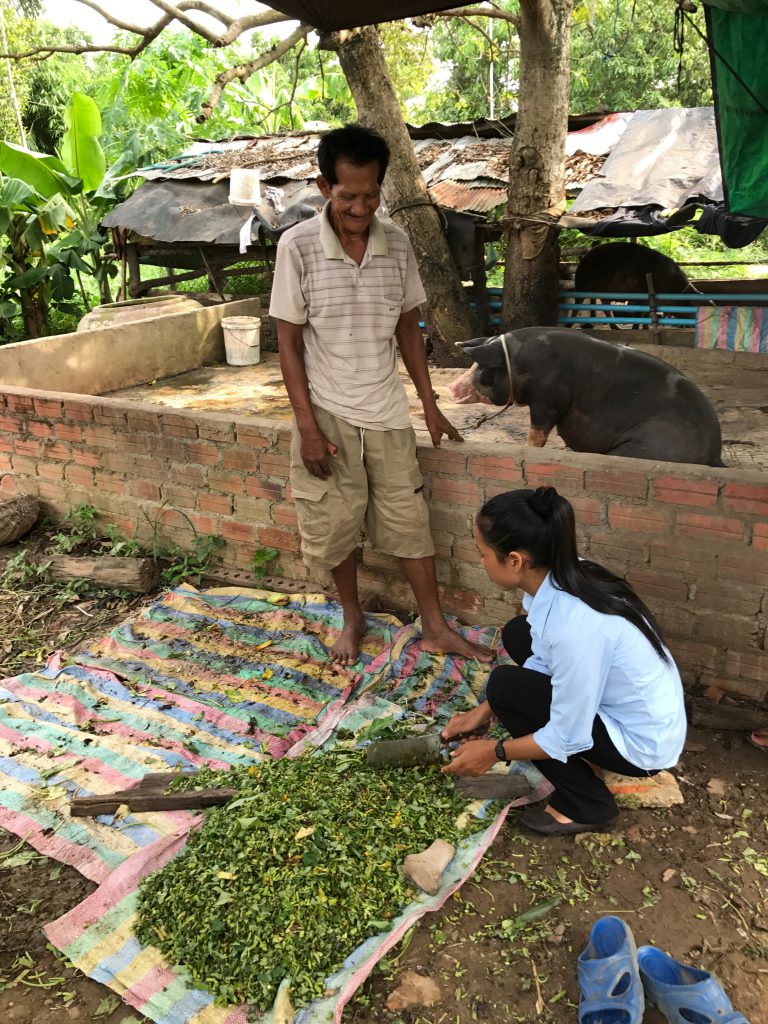
A version of this article first appeared on the UC Davis One Health blog.
New research supported by the Horticulture Innovation Lab at UC Davis aims to help farmers in Cambodia better integrate growing vegetables, raising livestock and maintaining healthy soil — all in the same place.
“By understanding the interactions between horticulture and livestock systems, we can help farmers make better use of agricultural inputs such as fertilizer and labor, which will help improve a farmer’s bottom line,” says Erin McGuire, associate director of the program, which is funded by the U.S. Agency for International Development.
“Systems thinking” is critical to making a real-world impact in global food security, according to Jessie Vipham, project leader for the new $750,000 project and assistant professor at Kansas State University’s Sustainable Intensification Innovation Lab.
“Too often overlooked is that systems piece, the very fact that these things — crops and livestock, soil health and human health — play together. It’s not always enough to study a single piece of the pie,” Vipham says.
Combining conservation agriculture with swine and cattle
As part of the U.S. government’s global hunger and food security initiative “Feed the Future,” the Horticulture Innovation Lab already has research in Cambodia helping farmers better grow vegetables using conservation agriculture practices. This combination of practices improves soil health through continuous mulch, no tillage and diverse crop rotation.
“When we visited the farms our researchers have been working with in Cambodia, they already had animals there. Figuring out how to best utilize their livestock is just smart,” McGuire says.
Because the Cambodians were sensitive to using pesticides and other synthetic supplements, they were interested in substituting manure and other livestock byproducts, she reports.

Manure vs. mulch
With farmers near Siem Reap — the city closest to Cambodia’s famous Angkor Wat temple complex — the team’s research will focus on integrating pigs with crops. One question the team will investigate is whether vegetable plant residues, which aren’t used for human food, might be used to better feed pigs instead of being used as mulch.
The Horticulture Innovation Lab team will investigate whether pig manure might take the place of that mulch and the various trade-offs in using manure vs. mulch.
Farther west, near the city of Battambang, farmers are more interested in cattle. Vipham explained that in this region cattle are often valued as a type of income safety net. If a farmer suddenly needs some money, then the family can sell their cow.
Research trials will likely focus on ways to maintain a cow’s physical condition (and potentially its selling price) with crops grown for livestock feed, alongside the farmers’ usual vegetable crops for sale and human consumption.
Advancing science while building local capacity
The American team will be working with Cambodian scientists from the University of Battambang and the Royal University of Agriculture. The international group met recently in Cambodia to explore research sites and make plans to move forward. Vipham is encouraged to see the scientists come together as a team.
“It’s one thing to make plans and write a grant proposal,” Vipham says. “It’s a totally different thing when you have your livestock scientists and horticulturalists and soil scientists on the ground, looking at the same thing, and you can see their wheels start to turn.”

One of the Cambodian researchers, Lyda Hok, is director of the Center of Excellence on Sustainable Agricultural Intensification and Nutrition, which includes five new “technology parks” where the team’s research will take place.
“With the five technology parks, we will be able to share this useful information and recommendations to more farmers throughout the country,” Hok says.
“Visiting these technology parks, you can feel how they are modeled after the American agricultural extension system to help move new agricultural practices from scientists to farmers,” UC Davis’ McGuire says. “By partnering with the Cambodian scientists for this research, we are also helping to support those efforts to rebuild Cambodia’s agricultural extension system.”
Helping farmers make their own best decisions
Hok and his colleagues at the Royal University of Agriculture have been working with U.S. university researchers connected to the Horticulture Innovation Lab since 2010. He says these partnerships are an important part of the problem-solving process.
“We have the same goal, to extend successful agricultural technologies to benefit more farmers, especially smallholder farmers,” he says.
Ultimately the team will distill the research findings into several documents aimed at helping farmers consider new practices, understand the trade-offs and make informed decisions about managing their farms.
“It all comes back to: How do we help make these decisions easier for farmers? They already have so much they’re dealing with,” Vipham says.
“Increasing productivity is important for generating income, but if I’m a farmer, what does that mean for conserving my resources? What does that mean for my ability to feed my children?”
More information:
- Project webpage: Investigating integrated vegetable-livestock systems in Cambodia
- More about the Center of Excellence on Sustainable Agricultural Intensification and Nutrition (CE SAIN) in Cambodia
- One Health blog version of this article: Combining Vegetables and Livestock in Cambodian Farming
